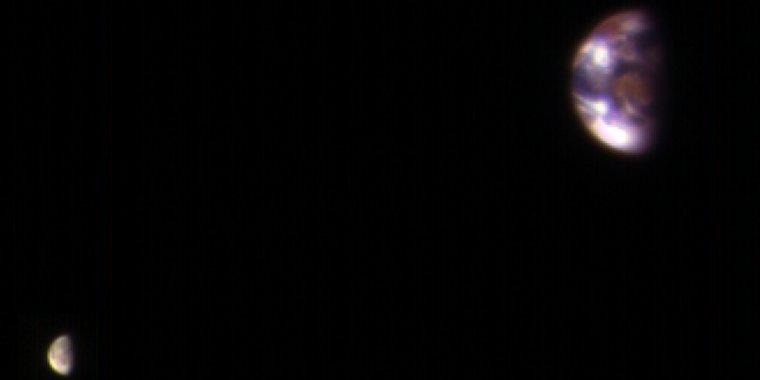| News / Space News |
Earth and Its Moon, as Seen From Mars
From the most powerful telescope orbiting Mars comes a new view of Earth and its moon, showing continent-size detail on the planet and the relative size of the moon.

A view of Earth and its moon, as seen from Mars. ![]()
The image combines two separate exposures taken on Nov. 20, 2016, by the High Resolution Imaging Science Experiment (HiRISE) camera on NASA's Mars Reconnaissance Orbiter. For presentation, the exposures were processed separately.
The combined view retains the correct positions and sizes of the two bodies relative to each other.
The distance between Earth and the moon is about 30 times the diameter of Earth. Earth and the moon appear closer than they actually are in this image because the observation was planned for a time at which the moon was almost directly behind Earth, from Mars' point of view, to see the Earth-facing side of the moon.
In the image, the reddish feature near the middle of the face of Earth is Australia. When the component images were taken, Mars was about 127 million miles (205 million kilometers) from Earth. (NASA)
YOU MAY ALSO LIKE





